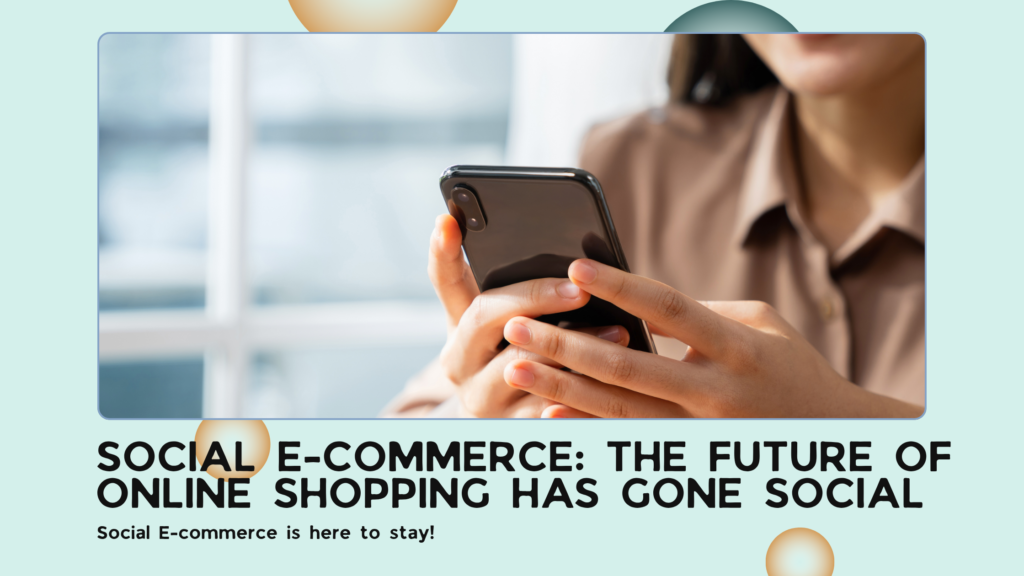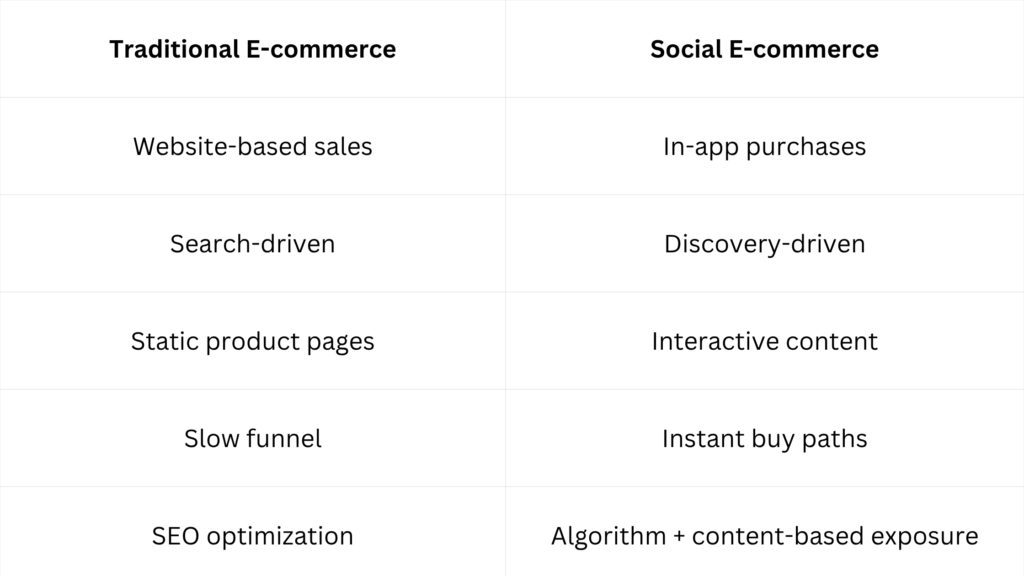
In today’s digital-first world, the consumer journey has undergone a dramatic shift. We no longer browse, decide, and buy on separate platforms — it’s all happening in one place: social media.
Welcome to the era of Social E-commerce — where platforms like Instagram, TikTok, Facebook, and Pinterest are not just for engagement, but for shopping, selling, and storytelling. And this shift is completely transforming marketing strategies and reshaping how e-commerce businesses operate.
What is Social E-commerce?
Social E-commerce (or social commerce) is the practice of using social media platforms to promote and directly sell products and services. This includes:
- Shoppable posts
- Livestream shopping
- In-app checkout
- Product tagging in content
- Influencer-led campaigns
- Short-form video commerce (e.g., TikTok Shop)
It’s a seamless integration of product discovery, community interaction, and purchase — all happening without ever leaving the platform.
Why Social E-commerce Is Exploding: The Numbers
- The global social commerce market is expected to hit $1.2 trillion by 2025, growing at a CAGR of over 30% through 2030.
- In the U.S., consumers are expected to spend over $90 billion through social commerce channels in 2025.
- Over 74% of social media users in the U.S. have made at least one purchase directly from a social media platform in the past month.
- 82% of consumers use social platforms for product discovery and research.
- Platforms like TikTok Shop saw a 26% rise in U.S. social-commerce sales in 2024 alone.
- TikTok has now become the 4th-largest beauty retailer in the UK, with one item sold every second through TikTok Shop.
(Source: The Times, Business Insider, Investopedia, Insider Intelligence)
How Social E-commerce is Reshaping Marketing Strategy
1. From Push Marketing to Discovery-Driven Engagement
Traditional ads are losing ground to scroll-stopping content. Social e-commerce thrives on discovery-based marketing, where the product is embedded within engaging content like Reels, Stories, and TikToks.
- Brands now create entertainment-first content that subtly sells.
- Influencer partnerships are used to boost authentic discovery.
- Platforms like TikTok even allow creators to tag products directly.
2. Shortening the Purchase Funnel
The days of multi-step website journeys are fading. With in-app checkout, customers move from “like” to “buy” in seconds.
- This eliminates friction, reduces bounce rates, and increases conversion.
- Brands benefit from platform-native retargeting and data collection.
3. Trust Through Social Proof & UGC
Customers trust people more than polished brand ads.
- User-Generated Content (UGC), testimonials, and comments now drive conversions.
- Reviews, shares, and likes are the new product ratings.
4. Rise of Live Shopping & Real-Time Selling
Live commerce (QVC-style selling in a social setting) is gaining serious traction:
- Shoppable live sessions convert at 10x higher rates than traditional e-commerce.
- Viewers ask questions, get answers, and buy in real-time.
5. Precision Targeting with Platform Algorithms
Social media platforms provide hyper-personalized ad targeting.
- TikTok and Meta platforms serve products to users based on behavior, interests, and interactions.
- Brands can now reach niche audiences with pinpoint accuracy.

This shift means e-commerce stores must now create for scroll-first consumption:
🎥 Short videos
📸 Shoppable images
🧠 Relatable UGC
📢 Influencer-led campaigns
Who’s Winning with Social E-commerce?
- Small businesses & solopreneurs using Instagram Shops for direct sales
- DTC brands using TikTok for viral growth (ex: skincare, food, fashion)
- Educational creators selling digital products via Pinterest and IG
- Amazon & Shopify sellers driving off-platform traffic via influencer collabs
What’s Next?
In 2025 and beyond, expect:
- AI-generated personalized feeds with shoppable product recommendations
- Voice & visual commerce integration (e.g., “Shop what I see” via images)
- More brands investing in creator partnerships over paid ads
- Social CRM tools to manage customer conversations within platforms
Final Takeaway
Social e-commerce is not just a trend — it’s a fundamental shift in how we shop, market, and build trust.
If your product isn’t shoppable on social media yet, you’re missing the next wave of growth. Whether you’re a startup or an established brand, now is the time to adapt your marketing strategy to meet consumers where they already are — on social.
📩 Want to explore how social e-commerce can work for your business? Let’s talk strategy.
Subscribe for More Content on Social E-commerce and Tips